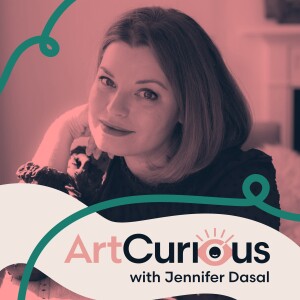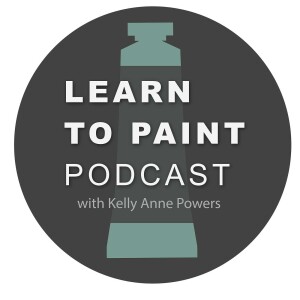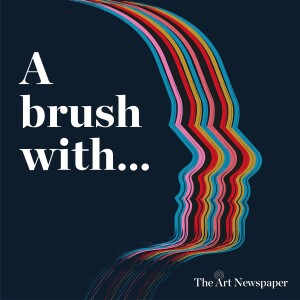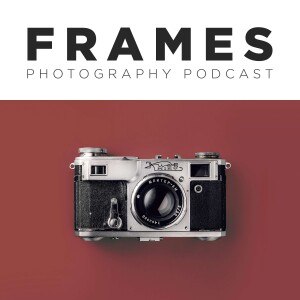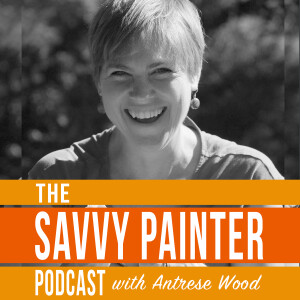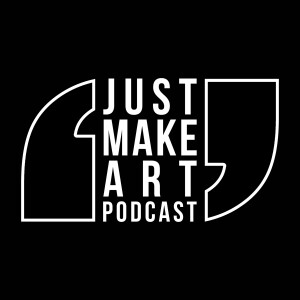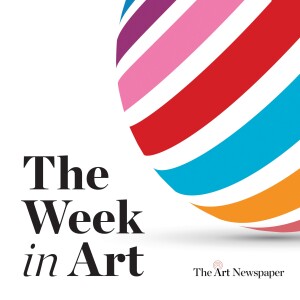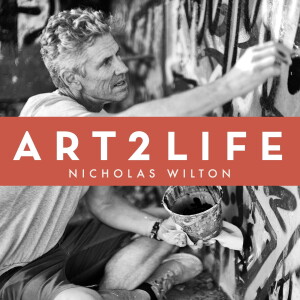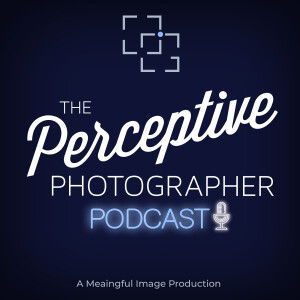

The Perceptive Photographer
https://www.danieljgregory.com/feed/podcastEpisode List

Art for Me or for You? Navigating the Creative Tug-of-War
In this week’s episode of the Perceptive Photographer podcast, I dig deep into a topic, prompted by a thoughtful question from a long-time listener, Dennis. His struggle is one I know many of us share: Are we creating for ourselves, or for others? In this post, I want to break down the main themes from that episode, offering nuanced insights for photographers and creatives who are navigating this complex terrain. I’ll explore the impact of feedback, the role of ego, the influence of social media, and the importance of understanding both your audience and yourself. The Duality of Artistic Motivation At the heart of Dennis’s question is a tension I think every artist feels:Personal Expression– The drive to create something meaningful to me, to explore my own ideas, emotions, and perspectives.External Validation–The desire for recognition, approval, or even just acknowledgment from others. It’s tempting to say, “I make art only for myself.” But if I’m honest, that’s rarely the whole truth. There’s an ego component—wanting to be seen, understood, and appreciated. The challenge is to recognize this duality without letting it undermine the authenticity of my work. The Impact of Feedback—And How to Use It Wisely Feedback is a double-edged sword. On one hand, it can help me grow and see my work from new perspectives. On the other, it can pull me away from my own vision, especially in the age of social media. The Social Media Trap I’ve seen—and experienced—how easy it is to start “gaming the algorithm.”Chasing Likes– I might find myself posting images I know will get attention, even if they don’t resonate with me.Losing My Voice–Over time, this can lead to a disconnect between what I want to create and what I actually produce. When I put something personal into the world, negative feedback can feel like a personal attack. That’s natural, but it’s important to separate myself from my work. Understanding Your Audience—And Your Role as the First Viewer Even in editorial photography, where I’m hired to fulfill someone else’s vision, my unique style and perspective are what make my work valuable. But before anyone else sees my images, I’m the first audience. I’m the one who clicks the shutter, edits the file, and decides if it’s finished. Ego isn’t always a bad thing. It can drive me to push boundaries and share my work. But unchecked, it can make me defensive or overly focused on external validation. The Value of Sharing While it’s important to create for myself, sharing my work allows it to grow and take on new meanings. Others may see things I never intended, and that’s part of the creative journey. Be honest about your motivations. It’s okay to want both personal satisfaction and audience engagement. Use feedback as a tool, not a compass.Let it inform, but not control, your creative process. Remember you are your first audience.If your work doesn’t resonate with you, it’s unlikely to resonate with others. Balance ego with openness.Confidence is good, but humility keeps you growing. Let your work live in the world.Sharing is part of the creative process, and it can lead to unexpected growth. The question of who we make our work for isn’t one I expect to answer once and for all. It’s a tension I revisit with every project, every photo, every share. What matters most is staying true to myself while remaining open to the world around me. That’s where the real magic—and growth—happens.

In Conversation with Ken Carlson: Curiosity, Craft, and the MFA Path
In the first episode of my new In Conversation series, I sit down with my friend and fellow photographer Ken Carlson to talk about his decision to pursue an MFA in photography. Ken’s path to grad school isn’t the usual one—and that’s exactly what makes his story so insightful. From a career in veterinary medicine to deep dives into critique and artistic voice, Ken brings a unique perspective to what it means to grow creatively, stay curious, and learn with intention. We talk about a lot in this episode: mentorship, the benefits (and limits) of structure, the importance of mastering craft before chasing higher-level study, and what it means to be a good listener—not just in critique, but in your own work. Life experience counts.Ken’s not starting from scratch. His years outside the art world give his work a grounded sense of perspective. He references Jung’s stages of life—how the early years point outward and the later years draw inward. That internal shift, he says, leads to deeper, more personal work. Whether you’ve been photographing for five years or fifty, taking stock of where you are in life can help you figure out where your art wants to go next. Mentorship and structure serve different purposes.During the pandemic, Ken worked with mentors, but eventually realized he needed more structure and push than informal feedback alone could provide. The low-residency MFA he chose offered a balance of community, accountability, and flexibility—something a lot of photographers might benefit from, regardless of age or background. Know your tools before you leap.We both agree: if you’re thinking about an MFA or formal study, don’t wait to learn the basics once you’re in the program. You want to walk in with your camera skills solid so your energy can go into exploration, not troubleshooting. Craft should support creativity—not get in the way. Critique is a skill.Ken admits that learning to listen again—to really be open to feedback—wasn’t always easy. But it was necessary. We talk about critique as a conversation, not a judgment. And how good critique requires vulnerability, not just defense. Curiosity over conclusions.One of my favorite takeaways from our conversation is this idea that snap judgments kill curiosity. Ken encourages us to slow down, take in the world, and let our work surprise us. That open-mindedness is essential for making work that evolves and resonates. If you’re considering an MFA—or just looking to push yourself creatively—Ken’s story is worth a listen. It’s not about having all the answers. It’s about staying open to the questions, being honest about what you need, and finding the courage to keep learning. You can hear the full conversation on The Perceptive Photographer. And as always, if something from the episode resonates with you, I’d love to hear about it. Daniel

Finding Your Point of Entry in Photography
In this episode of The Perceptive Photographer, I spent some time digging into a concept that’s easy to overlook but deeply important: the point of entry in photography. It’s that first moment of connection—the thing that makes you stop, raise your camera, and engage. Sometimes it’s obvious: striking light, bold color, or an expressive face. But often it’s more subtle, like a mood, a memory, or something you can’t quite explain. That entry point isn’t just a visual cue—it’s a clue to why you make the work you do. When you start to notice what consistently pulls you into a scene, you begin to recognize your tendencies, your voice, and what matters to you emotionally and creatively. It shapes how you compose, what you leave in or out of the frame, and how your work is experienced by others. I’ve found that slowing down—pausing before I click the shutter and asking what’s actually catching my eye—makes a huge difference. It turns the act of photographing from reactive to intentional. Over time, those small observations build up into a deeper sense of clarity about your process and your perspective. What makes this even more interesting is that no two photographers have the same point of entry. We each bring our histories, biases, and emotions to the act of seeing, and that’s what gives photography its richness. That’s why I always encourage conversations, critiques, and sharing work with others. When you can articulate why you were drawn to something—whether it’s a subject, a color, or a feeling—you’re well on your way to making more honest, more resonant images. So next time you’re out with your camera, take a moment to notice that first spark. That’s where your real work begins.

Seeing Clearly: Mentorship, Duality, and the Core of Your Work
In this week’s episode of The Perceptive Photographer, I take some time to reflect on the people who shape us, the dual nature of photography, and the internal compass that guides our creative work. Episode 537 feels especially personal as I honor my mentor, Seth Thompson, and revisit the big questions that keep me engaged behind the camera. Seth isn’t just someone who taught me how to see color—he teaches me how to think about it, how to push beyond the surface of an image, how to chase deeper meaning. Even now, his influence runs through everything I do. Mentorship, I realize, isn’t just about gaining skills—it’s about learning how to see and how to be as an artist. And at some point, it becomes our turn to pay it forward. I also talk about the duality of photography—how every image straddles the line between nonfiction and fiction. Yes, we capture real moments, but we also make choices that shape those moments: framing, color, tonality, sequencing. Black and white often abstracts; color anchors. What matters is recognizing what story we’re telling—and why. This episode also circles around clarity—specifically, getting clear on the core themes in your work. I share a simple exercise I use to uncover those recurring threads—words or ideas that quietly (or loudly) show up again and again in the images I make. Knowing what drives you creatively doesn’t limit you—it gives you direction when you need it most. There are a few exciting things on the horizon too. The Unseen Mystery Show opens July 8 at Image City Photography Gallery in Rochester, NY, featuring work from my meaningful image workshop group. I’m currently teaching a workshop in the Palouse, and 2026 dates are now set. Plus, I’m kicking off a new In Conversation series—bonus podcast episodes with fellow photographers about process, practice, and perspective. At the end of the episode, I touch on something I’ll explore more soon: the question of audience. Who do we make our work for, and how does that shape what we create? It’s not a simple answer, but it’s one worth wrestling with. As always, thanks for listening—and for being part of this community. I hope this episode gives you something to think about as you continue making, reflecting, and growing in your own work. —Daniel

Photographic trophies verse experiences
As a photographer, I’ve often found myself drawn to the allure of the “bucket list” shot—the iconic landscape, the famous cityscape, the image that everyone seems to want in their portfolio. In this episode of the Perceptive Photographerpodcast, I explore why this mindset can actually hold us back, and how shifting our focus to personal expression opens up a deeper, more fulfilling path in our photography. The problem with chasing trophy shots is that it narrows our field of view. When I’m focused on getting the shot, I can easily miss the quiet, fleeting moments unfolding around me—subtle gestures, shifts in light, or unexpected details that carry far more personal meaning. True creativity comes from responding to these moments as they happen. It’s not about recreating someone else’s vision, but about staying present, being open to surprise, and allowing my emotional response to guide the photograph. In doing so, my work feels more honest and connected to my experience of the world. Even the language we use to describe photography can shape how we approach it. Terms Sontag discusses in On Photography like “shooting,” “capturing,” or “taking” suggest a kind of conquest or collection. Instead, I think of photography as an act of “making” or “creating” — building something that reflects how I see, feel, and engage with the world. The world doesn’t need another version of the same iconic scene; it needs our unique perspectives and stories. When we move beyond the bucket list mentality and embrace personal expression, photography becomes more than a record of where we’ve been—it becomes a reflection of who we are.
Create Your Podcast In Minutes
- Full-featured podcast site
- Unlimited storage and bandwidth
- Comprehensive podcast stats
- Distribute to Apple Podcasts, Spotify, and more
- Make money with your podcast


